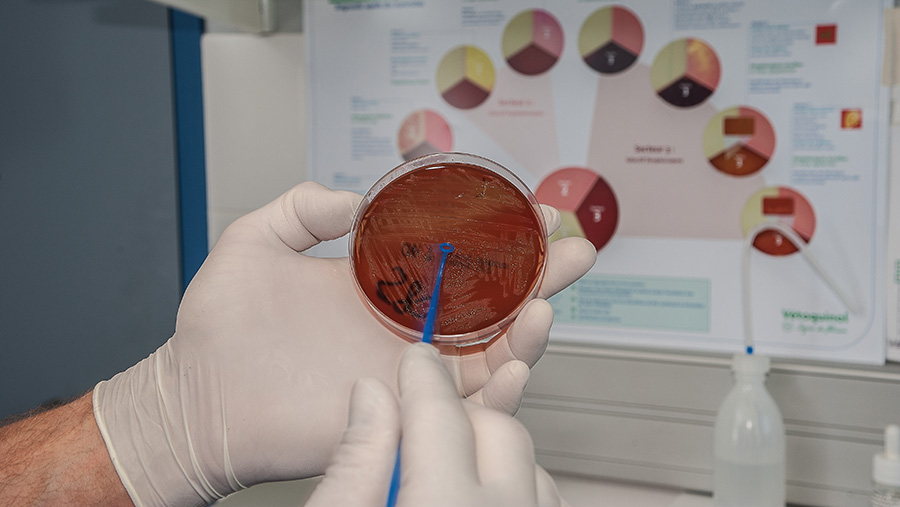Tips on managing mastitis control programmes
 © Antoine Photographe/Adobe Stock
© Antoine Photographe/Adobe Stock When our dairy farmers are asked what they would most like to improve, mastitis often ranks highest.
With an estimated annual cost to the industry of £170m, this will come as no surprise, but its effects extend much further than the balance sheet.
Mastitis has ramifications for cow welfare, milk yield, labour and public perception, to name a few.
A farm mastitis investigation by your vet will cast a fresh pair of eyes on the issue and provide specialist advice. Below are some pointers on how to make the most of it.
See also: Guidance on mastitis recovery rates helps aid treatment plans
About the author

Charlotte Watkins is a clinical vet working in Herefordshire with Belmont Farm and Equine Vets.
She is an AHDB mastitis control plan deliverer and has a keen interest in udder health and milk quality.
Structured framework
Mastitis control and prevention is multifactorial, covering all aspects of the farm system, from environment and housing to heifer management, and feeding to milking routines.
So, although mastitis targets can be the same, how we achieve these targets often differs widely between units.
For this reason, vets need to take an overall view when assessing mastitis; we need to get out on farm and see everything first hand to make the most effective improvements.
When you are very familiar with a unit, it can be easy to jump to conclusions on what the best next steps are. The AHDB Dairy mastitis control plan is a way to avoid this.
As a structured framework, it ensures no stone is left unturned, and the most important targets are prioritised.
Seeing the whole picture is essential to ensuring the most important problems are acted upon.
Observe and evaluate protocol
Often on farm, what is intended to happen is very different to what is actually happening at a cow level. This is why it is so important to observe things first hand, to avoid assumptions.
Just because a particular practice is included in a protocol does not mean it has been adopted by the team. Identifying such situations can produce “big wins” with staff training.
It is also vital to consider everything you see in relation to when you are assessing it. For example, if a dry cow pen is assessed just after it has been bedded, it will seem great.
But if it is not going to be bedded again for three days, it could be a false representation.
Equally, heifer management can often be a forgotten part of the puzzle; these animals are the future of the herd, and if they become infected, you will be challenged for the rest of their productive life.
Recording and data
The power of data on farm cannot be underestimated: it allows us to focus our efforts on where we will get the most benefit and avoid taking the wrong action.
For instance, if a unit had a mastitis problem originating in the dry period, it would be ineffective to change the milking cow environment, and vice versa.
Your vet can analyse the data for your unit and identify the individual farm mastitis pattern and the improvements that will have the biggest effect.
However, these assessments are only as accurate as the information that they rely on. Clinical mastitis case data can be a shortcoming of many farms, which prevents us prioritising the most effective conclusions.
Avoid relying on lots of pieces of paper that can be burnt, lost, or have tea spilt over them.
Instead, keep accurate records of cases and treatment outcomes, and put them onto the farm data management system so that everything is in one place and easily accessible.
Preventing infection
The easiest way to deal with a cow with a chronic high somatic cell count is to stop her from ever being infected in the first place. Treatment of such cows in lactation is very unrewarding and a waste of your time and money.
Instead, efforts should be directed to management changes to prevent the issue ever being created. And, for those currently chronic cows, focus on dry period treatments to achieve a cure.
Know your bacteria
Knowing the type of bacteria that are causing your mastitis is vital to inform prevention and treatment. Gram-negative bacteria such as E coli tend to be related to the environment and are easily killed, often without antibiotics.
However, gram-positive bacteria, such as Staphylococcus aureus, are far more likely to spread from cow to cow and tend to cause chronic infections unless treated initially with appropriate antibiotics.
Starting to sample milk only after a problem is identified on farm will cause a huge delay in getting answers.
Instead, take samples of all clinical cases prior to treatment and freeze these; this gives a bank of samples to send off for culture as soon as there is a problem, avoiding delay.
On-going process
The adage that “Rome wasn’t built in a day” could not be truer. It is important that we see mastitis management as an ongoing process.
Once an initial investigation is done on farm, you should have a list of outcomes that will be most beneficial.
However, as so many factors affect your level of mastitis, it is impossible to change each individual one at once. Instead, the most effective mastitis investigations focus on a small number of changes that will have the “biggest wins” on farm initially.
Once these changes have been made, we should look to review, reassess, and then make further progress in the future.
It is through this reviewing process that teams often become most incentivised and achieve top performance.
